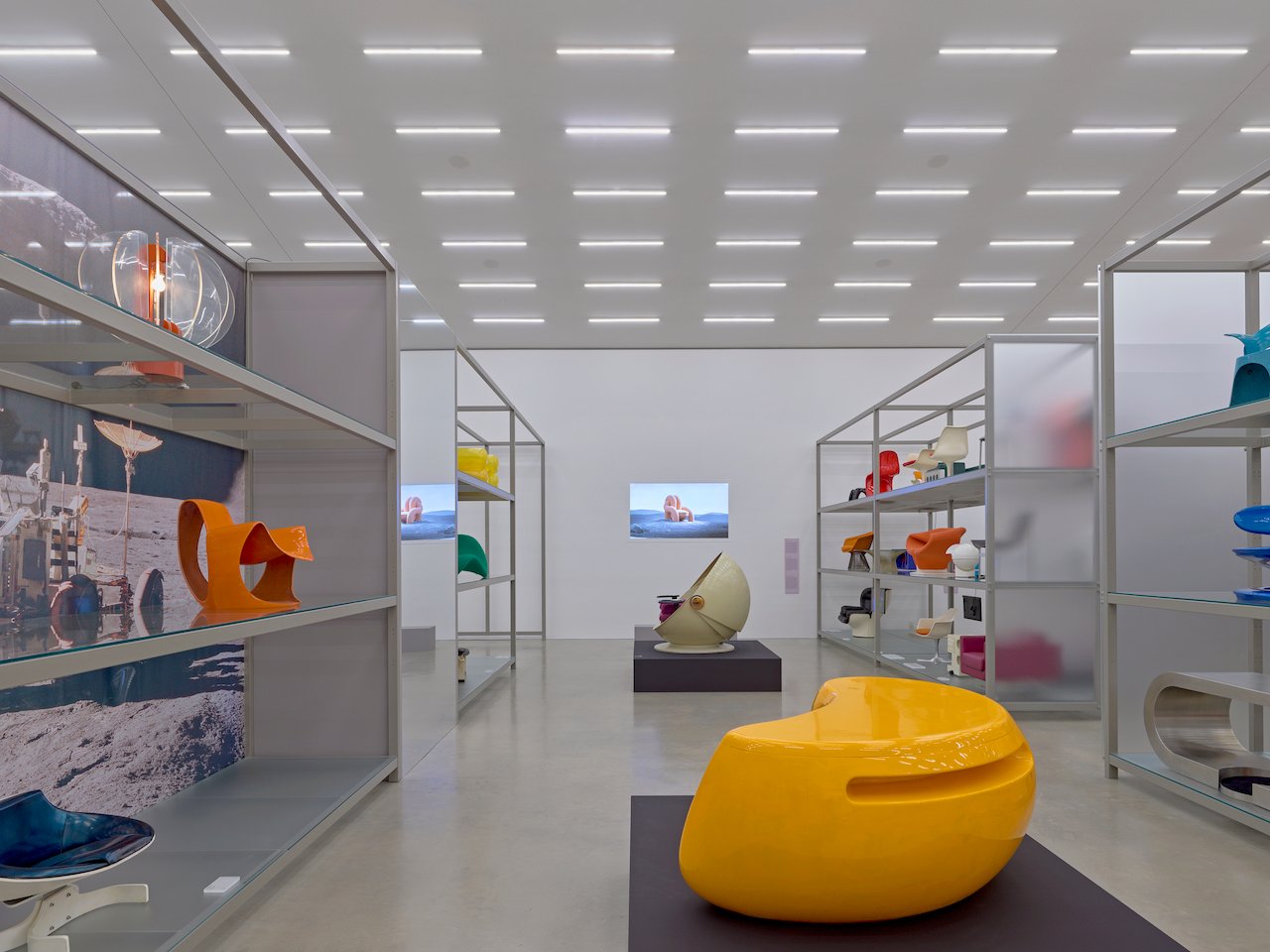Science fiction has had an immense influence on the arts, including literature, cinema, graphic arts, and design. This impact is so significant that Swiss furniture company Vitra has dedicated a year-long exhibition titled Science Fiction Design: From Space Age to Metaverse to explore this intersection of design and science fiction.
To understand the relationship between these two realms means revisiting the history books. In short, design and science fiction have had an ongoing relationship since the 1950s following the technological boom of the Industrial Age. Science fiction began to come into its own as a genre when creatives of the time started imagining a futuristic world made possible by new technologies.
First, the world watched the space race unfold between the United States and the Soviet Union and witnessed the first satellite launches, inspiring iconic designers like Gae Aulenti, Eero Aarnio, Luigi Colani, Joe Colombo, and Verner Panton to trail blaze a new expression of design based on space travel technology. These designs, distinct for their organic shapes and shiny plastic surfaces, were made famous on the big screen, like Olivier Mourgue’s Djinn seating series in Stanley Kubrick’s 2001: A Space Odyssey (1968) and Eero Aarnio’s Tomato Chair in Barry Sonnenfeld’s Men in Black (1997). Comics, pulp magazines, and books also began to explore the theme of sci-fi, creating a new fan base for the genre. Years later, computer-aided design and 3D printing led to Joris Laarman’s Aluminum Gradient Chair (2013), the first 3D-printed metal chair. In more recent years, the metaverse has opened the doors to what seems like infinite possibilities for emerging designers to create and experiment.
All of this, and so much of what visitors will see at the Vitra Schaudepot, used to seem impossible until designers made their ideas a reality. Over 100 objects documenting the dialogue between design and science fiction are on display in the exhibition, staged by Argentine visual artist Andrés Reisinger. A designer himself, he included his Shipping Series (2021) and his Hortensia Chair (2018), the latter initially an NFT and then a physical piece of furniture. As the exhibition’s creative director, Reisinger explains his vision: “As soon as I was invited by the Vitra Design Museum to work on this exhibition, I knew I wanted to incorporate the themes of Argentine fantasy writer Jorge Luis Borges, whom I’ve long admired. A central motif in his work is mirrors, symbolic of portals to alternate realities. With this in mind, I resolved to honor Borges by making mirrors focal points of the exhibition, utilizing them to reflect and evoke multiple realities and timelines intertwining, creating a new dimension within our contemporary world. I am thrilled with what we have achieved with this exhibition, which speaks of a time and a space that truly knows no time and space.”
Below is a small selection of objects found in the exhibition:

Erich Kettelhut, Drawing for Metropolis, 2nd Edition, 1925 © Deutsche Kinemathek – Museum für Film und Fernsehen, Erich Kettelhut Archive

Verner Panton, Fantasy Landscape at the exhibition Visiona 2, Cologne, Germany, 1970 © Verner Panton Design AG, Basel

Joe Colombo, Living Center, 1970/71 © Ignazia Favata/Studio Joe Colombo \ Photo: Rosenthal Einrichtung

Maurice Calka, P.-D.G. Desk, 1969 © Vitra Design Museum \ Photo: Jürgen Hans, © VG Bild-Kunst Bonn, 2024
Running through May 11, 2025, Science Fiction Design: From Space Age to Metaverse is a must-see exhibition for anyone fascinated by the interplay of design and futuristic vision. To learn more, visit vitra.com.
Exhibition photos by Mark Niedermann.





































Leave a Reply